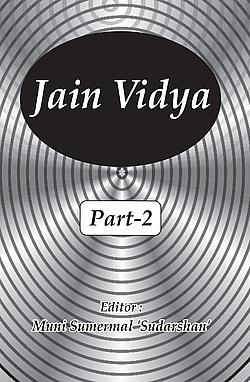(That which has form and visibility is rupi and that which is devoid of material qualities, form, visibility, is arupi)
Teacher- Ramesh! Why are you looking upward?
Ramesh-1 am looking at the space.
Teacher- Can you see the space?
Ramesh- Yes, Master! Doesn't it look blue?
Teacher- Ramesh, tell me whether the space exists only above your head and not below you.
Ramesh- Why not. It pervades everywhere. Without it even a point of the needle cannot stay.
Teacher- Then it must be present near your finger too. Ramesh- Yes, definitely it does exist here.
Teacher- Are you able to see it?
Ramesh- No, I can't see it here. What is the reason Master! please tell me why the space above is visible and why it isn't visible here.
Teacher- Ramesh! You are forgetting. That which appears blue above as sky is not the space. These are the particles of dust which are gathered there and they appear blue on account of the distance.
Ramesh- Then can we not see the space?
Teacher- No! because we can see only those objects which have the qualities of colour, smell, taste and touch. Ramesh! remember, the objects which have these four qualities are known as rupi. Since the space is devoid of these qualities, thus it is arupi.
Ramesh- Master! can we see all those objects which have material qualities?
Teacher- No, the atoms or subtle clusters which have material qualities but we cannot see them. Those that are rupi (having material qualities) are not all necessarily visible but those that are visible are definitely rupi (the objects that have material qualities).
Ramesh- Why! What is its reason?
Teacher- Our ability of vision and perception is limited hence we cannot see them although they may have material qualities. Ramesh- We may not be able to see them with our eyes but we have many microscopic instruments. Can we see them with their help?
Teacher- No, many objects which have material qualities are extremely subtle: Hence cannot be seen even by the technomachines.
Ramesh- The scientists of today are able to see the atoms by the technological assistance with high resolution, then are these objects much smaller than them.
Teacher- No, there can be no object which is smaller than an atom but the objects which the modem scientists call atoms are not really the atoms because they can be split. They are much gross than the actual atom.
Ramesh- Then, are they not the atoms?
Teacher- No. Not the real atoms. The object which the modem scientists describe as atom is small cluster of atoms and in our day-to-day empirical language, we can call it an atom. Ramesh- which objects are mpi i.e. having material qualities? Teacher- all those objects which are made of matter (pudgals) are called mpi (having material qualities).
Ramesh- It means all other substances (dravyas) except the substance pudgal (matter) are arupi (can not be seen) because colour, smell, taste, touch are not found in any other substance except the pudgal.
Teacher- Yes, it is absolutely correct. Out of the sixth substances (dravyas) only pudgal (matter) is rupi (having material qualities hence can be seen) and the rest are all arupi (devoid of material qualities). Thus, they are unperceptible.
Questions:
- Above our head what is it that appears blue?
- Which objects can you see?
- Do dharmastikaya and adharmastikaya have material qualities?
- Out of the six substances, how many of them are devoid of material qualities?
- Can anything exist without space?
